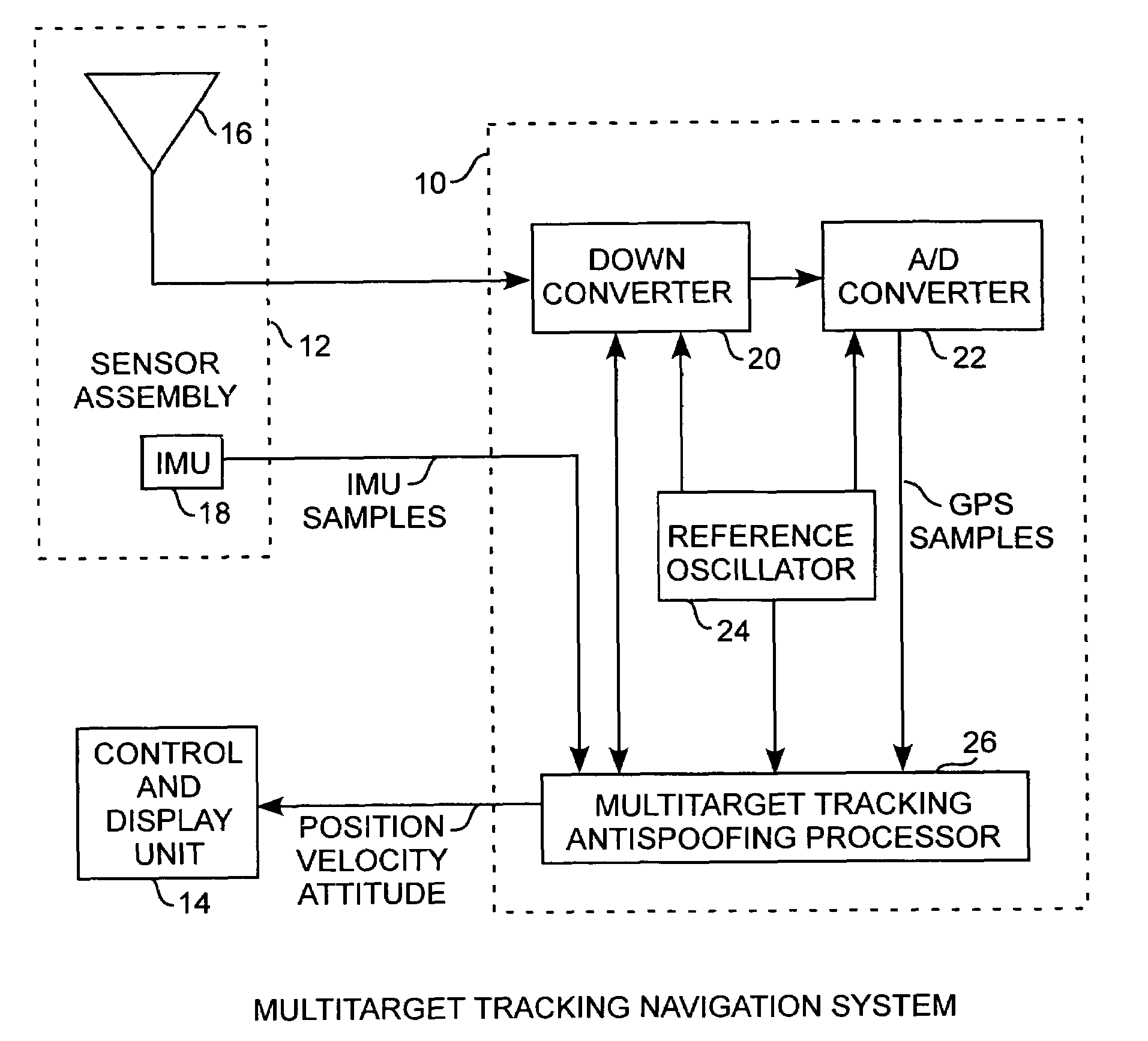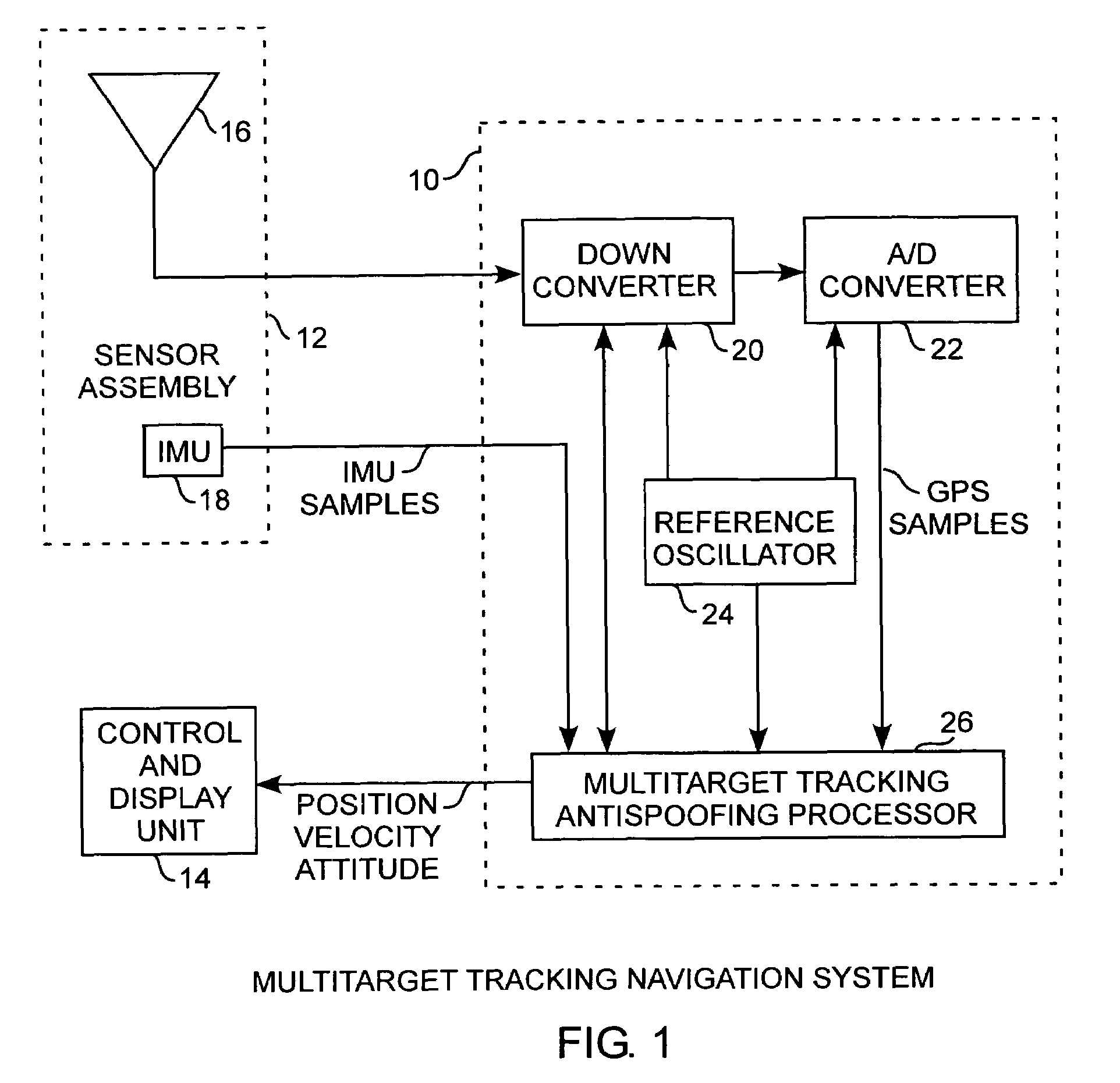Multitarget tracking antispoofing receiver
a receiver and multi-target technology, applied in the field of gps receivers, can solve the problems of inability to address methods, limitations regarding the size of the field of view, and existing methods are not well positioned to function properly, so as to hinder the ability to interfere, maintain the ability to.
- Summary
- Abstract
- Description
- Claims
- Application Information
AI Technical Summary
Benefits of technology
Problems solved by technology
Method used
Image
Examples
Embodiment Construction
[0036]An embodiment of the invention is described with reference to the figures using reference designations as shown in the figures. Referring to FIG. 1, a global positioning system (GPS) inertial navigation system includes a navigation system 10 receiving GPS signals and inertial measurement unit samples from a sensor assembly 12 and provides position and velocity data to a control and display unit 14. The navigation system 10 functions as a GPS inertial navigation system tracking GPS signals from a plurality of in-view satellites, not shown. The sensor assembly 12 includes an antenna 16 for receiving and providing received GPS signals and includes an inertial measurement unit (IMU) 18 providing the IMU sample signals, both of which are communicated to the navigation system 10. In the preferred form, the IMU 18 may be a microelectromechanical system (MEMS) IMU embedded in the antenna 16. The navigation system 10 includes a downconverter 20 for frequency downconversion of the recei...
PUM
 Login to View More
Login to View More Abstract
Description
Claims
Application Information
 Login to View More
Login to View More - R&D
- Intellectual Property
- Life Sciences
- Materials
- Tech Scout
- Unparalleled Data Quality
- Higher Quality Content
- 60% Fewer Hallucinations
Browse by: Latest US Patents, China's latest patents, Technical Efficacy Thesaurus, Application Domain, Technology Topic, Popular Technical Reports.
© 2025 PatSnap. All rights reserved.Legal|Privacy policy|Modern Slavery Act Transparency Statement|Sitemap|About US| Contact US: help@patsnap.com



